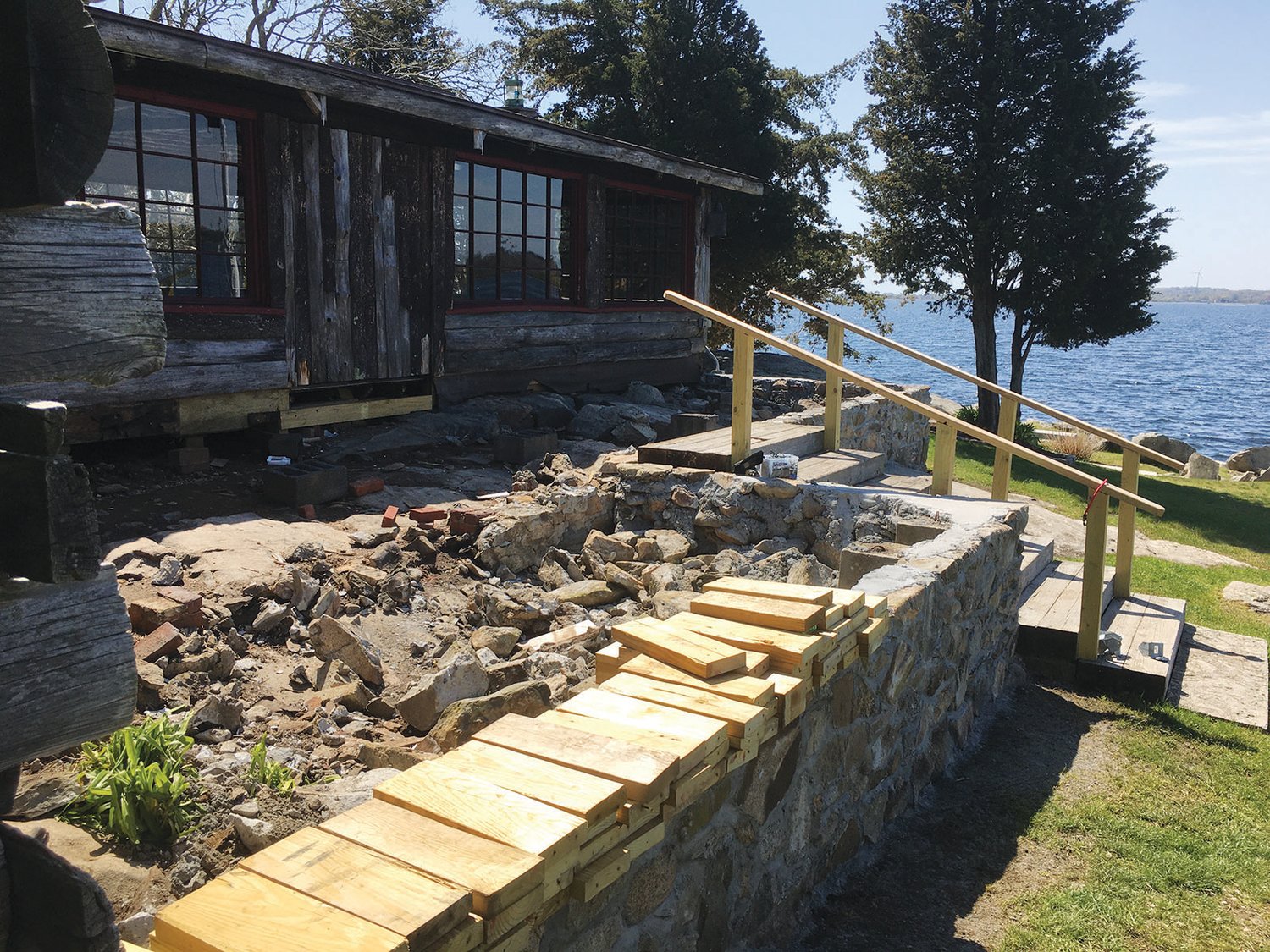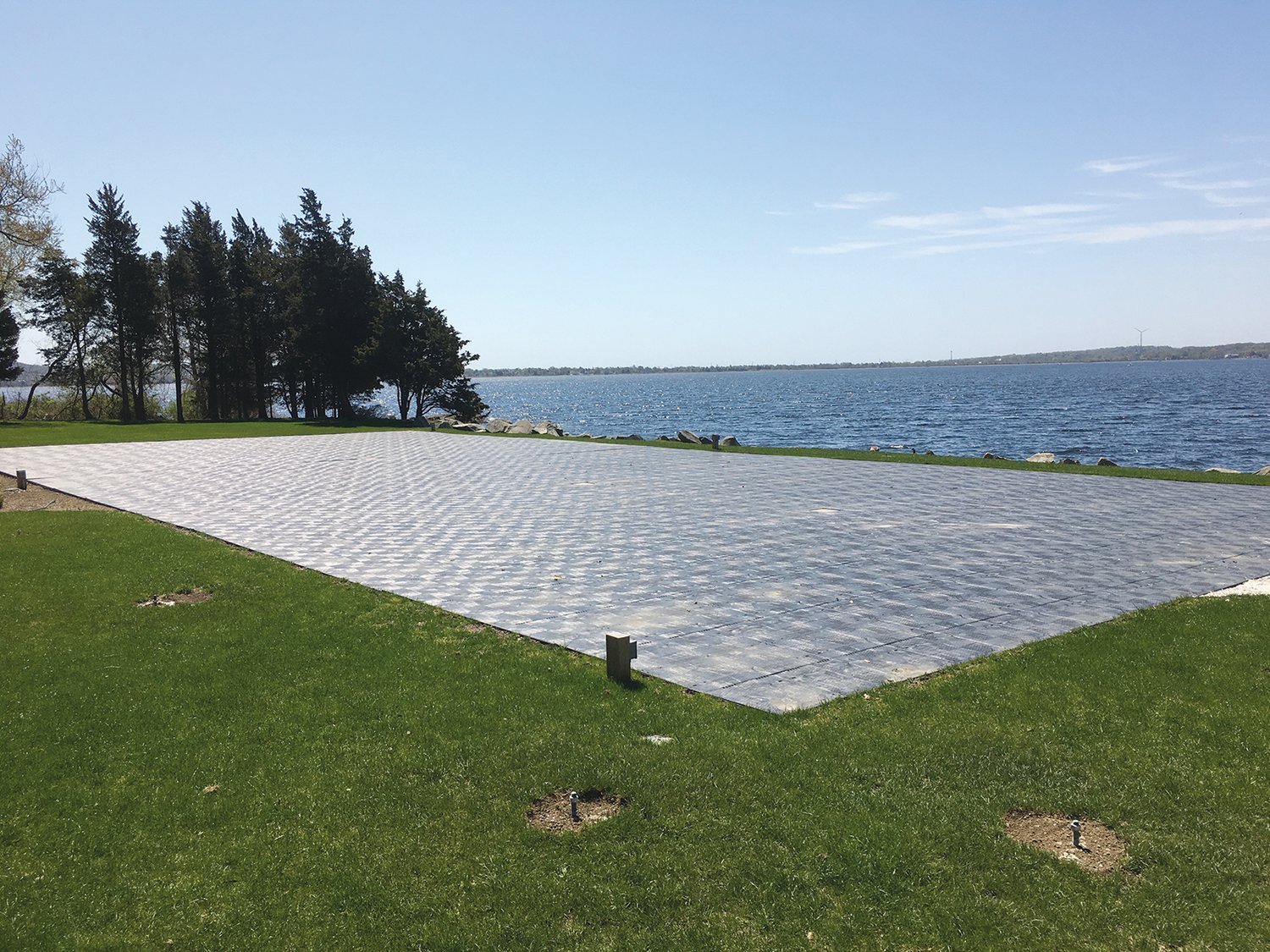- THURSDAY, APRIL 25, 2024
Mount Hope Farm working to right their wrongs
Mount Hope Farm is on the road to redemption with the Town of Bristol, after more than a year of odd missteps. Their latest step was a walking tour of the farm last Friday morning for members of the …
This item is available in full to subscribers.
Please log in to continue |
Register to post eventsIf you'd like to post an event to our calendar, you can create a free account by clicking here. Note that free accounts do not have access to our subscriber-only content. |
Day pass subscribers
Are you a day pass subscriber who needs to log in? Click here to continue.
Mount Hope Farm working to right their wrongs
Mount Hope Farm is on the road to redemption with the Town of Bristol, after more than a year of odd missteps. Their latest step was a walking tour of the farm last Friday morning for members of the Bristol Historic District Commission and anyone who cared to follow the bumpy live-stream from a hand-held phone.
Commission members walked a loop among some of the buildings north of the iconic Governor Bradford House, built in 1745, stopping for an extended period of time in front of a stark rectangle of concrete rising from the earth. As this was an official public meeting for the board that regulates historic properties in town, everyone tried to speak loudly enough to be heard in the Zoom feed being broadcast to the public. It was not difficult to discern what commission member Ben Bergenholtz was saying when he asked about that 4-foot-high foundation in the middle of a property listed on the National Register of Historic Places.
“Why is it so tall?” he asked. “It looks like a bunker.”
Speaking for Mount Hope Farm’s board of trustees and serving as Friday morning’s tour guide, Merritt Meyer answered, “We don’t know.”
He went on to say that the Mount Hope board was “very unhappy” about the foundation, which was supposed to be the first step in construction of a new barn to house animals. “The foundation was poured before anyone knew it was happening,” Mr. Meyer said. It cost $30,000, and it was a no-bid project. “The board is not happy with it,” he reiterated.
“So your board was not aware this was going on?” historic commission member Victor Cabral asked. “I want that on the record.”
“I wasn’t pleased,” Mr. Meyer said.
The board claims it did not know it was happening. The Town of Bristol definitely did not know it was happening. Former historic district commission assistant Susan Church was scrolling Facebook one day in October of 2019 when she saw a Mount Hope Farm post celebrating its new foundation. Ms. Church alerted Director of Community Development Diane Williamson, and within days the town issued a cease and desist order.
Mount Hope Farm had not received approvals from the Bristol Planning Board, Historic District Commission or Building Inspector’s office before digging and pouring the foundation. The Farm did not even have a building permit. Construction of the barn stopped immediately, and the foundation stands today as it did then.
Last Friday, Mr. Meyer said that when the barn is constructed, it will be designed to cover most of that foundation, which he called “unsightly.”
As for who was responsible for the foundation, Mr. Meyer was evasive. At one point during the meeting, while they were standing beside the enormous parking lot created just east of the Governor Bradford House and barn, he said the “zealot who did the barn also did this.” Other than that, he would not identify who was responsible for those actions.
Who was in charge?
Like the live-feed of last week’s meeting, the history of Mount Hope Farm leadership is bumpy at times. After longtime director Jim Farley was pushed out a decade ago when the farm was on the verge of financial collapse, a new board and new leadership took over. Jennifer Bristol served as executive director during some good years, and when the farm had a sudden vacancy at the top back in 2017, then-board of trustees president Gina Macdonald stepped down from the board to take the leadership role on what was supposed to be a temporary basis. That turned out to be a nearly two-year stint, which ended in December of 2019.
At the time she left, Mount Hope Farm announced that a group of trustees would be stepping in to lead day-to-day operations at the farm, and trustee Mike Hoffman was credited with volunteering countless hours to the cause.
The farm continued without a dedicated leader for almost a year, until Sheri St. Germain was hired in September of 2020. At the time, the farm’s primary source of income — hosting weddings — was dormant. That has changed dramatically. Ms. St. Germain said the wedding business is absolutely booming right now, with three to five events booked for every week of the wedding season, now through the fall.
“It’s beyond anything we’ve ever experienced,” Ms. St. Germain said during an interview.
Are fences ‘structures’?
Last Friday, the walking tour continued north from the mysterious “bunker” to a building few people have ever seen. A building in the North Pasture, most likely built in the 1950s, has been renovated and is used today as a separate four-room inn far from the primary inn — “This is where the groomsmen often stay,” Ms. St. Germain laughed.
Commission members circled the outside of the building, stopping to talk about how the Farm could add a handicap-accessible ramp while staying within historic regulations. While there, they asked questions about a large plot of land being used to grow vegetables. Tended by the University of Rhode Island Master Gardeners program, the land produces thousands of pounds for local food pantries every year.
Commission members were impressed, but more focused on the chainlink fence that surrounds the garden and a couple of outbuildings constructed near it. Mr. Meyer and town solicitor Andy Teitz engaged in some lively back and forth over whether fences are regulated “structures,” subject to town review, or not.
“I don’t think of a fence as a structure,” Mr. Meyer said.
“We do,” Mr. Cabral answered.
That back-and-forth theme played out multiple times during the meeting — over an electronic gate installed between the farm’s main parking lot and the road leading to Cove Cabin on the shore of Mount Hope Bay, over fences and sheds, over windows and doors — with Mr. Meyer asking if they needed permission for certain things and town officials clarifying yes or no.
A long-term plan
Friday’s tour was part of an official Master Plan review for Mount Hope Farm. With major properties like the Farm or Roger Williams University, the town will often develop a long-term master plan for development, designed to last for five to 10 years. As long as the entity works within its approved master plan, it does not need to go back to the town for every little approval along the way.
The new barn was not in its approved master plan. Neither was the gate or some of the fences, etc. Throughout the meeting, commission chairwoman Oryann Lima and Mr. Teitz repeatedly told Mr. Meyer, “put it in the plan.”
So Mr. Meyer will be submitting revisions to the farm’s master plan, to be reviewed and hopefully approved by both the historic district commission and the Bristol Planning Board.
The Cove Cabin deck
One thing not approved by anyone in town, or the state, was destruction, redesign and expansion of a deck attached to the Cove Cabin at the eastern end of the farm’s 127-acre property. Like the barn, it drew the ire of town officials when they discovered the historic deck with its unique rough-hewn railings had been torn down and rebuilt with modern materials one might find on the back of a 2,000-square-foot raised ranch.
That discovery led to multiple tense discussions with the planning board, the most recent taking place last week.
Though it sounds absurd, this is the actual story of that deck:
• First, Mount Hope Farm ripped it down and rebuilt it without review or approvals from the planning board, historic district commission, building inspector or Coastal Resources Management Council (regulating construction along the shoreline).
• When they inspected, town officials discovered the new deck was bigger than the original.
• Mount Hope Farm then tore down the new deck, per town instructions.
• The town granted the farm permission to rebuild a temporary deck, to its original dimensions, just so they could get through their peak wedding season intact. (That deck is a prime attraction during weddings and events under the tent beside Cove Cabin.)
• A little more than a week ago, they rebuilt a temporary deck, just in time for the first wedding of the year.
• Sometime in the next year, they will officially submit plans for a new deck to all those regulatory bodies.
• If approved, that temporary deck will be torn down and rebuilt to specifications approved by the town and state.
Speaking of the farm’s massive tent and tent pad, that’s another addition that never received official approvals. According to Ms. Williamson from the town’s community development office, the tent pad probably should have received CRMC approval, maybe town review as well. It did not.
“We want to support them, as a nonprofit,” Ms. Williamson said, “but there are certain expectations for how they conduct themselves. We’ve told them, that's not how we do business in Bristol. They were told that pretty explicitly, that’s not how we do things.”
In March, Ms. St. Germain, who inherited most of these problems from the recent past, wrote a note to the Bristol Planning Board and said, “The person who initiated work without required approvals is no longer in authority.” She continued, “Humbly, as we apply for this and any future project, I ask for your willingness to work with me so that Mount Hope Farm is 100 percent in compliance with all guidelines of the State, Town of Bristol, Bristol Historic District Commission and Planning Board. I fully recognize Mount Hope Farm is at fault in this situation and ask that you accept my word that we will work to be in total compliance in the future.”
Other items that may interest you









